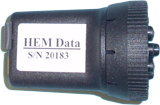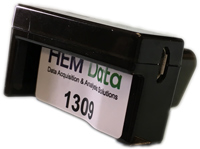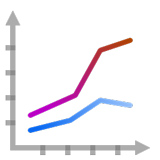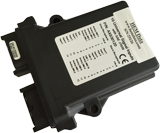All modern vehicles transmit hundreds of in-vehicle network messages describing vehicle status, driving conditions, and error codes. Some of these messages are standard, but most are unique for each OEM. Some require request messages and others do not. To acquire the vehicle data of interest, the engineer must use one or more of the following four database types:
- Generic OBD-II – standard on all cars and light trucks after 1996
- Enhanced OBD – similar to a service scan tool database
- Normal messages – transmitted for normal vehicle operation
- Direct Memory Reads (DMRs) – reads a controller’s memory
1. Generic OBD-II
Generic/legislated OBD-II is a standard defined by SAE J1979. It specifies nearly 100 parameters, and around 40 are available on a typical car or light truck. Parameters are generally limited to the engine.
Example messages include: Absolute Throttle Position, Air Flow Rate from Mass Air Flow (MAF), Engine Coolant Temperature, Engine Speed (RPM), and Vehicle Speed. Examples of parameters that are not available using generic OBD-II are: odometer, steering angle, braking on/off status, or any ride and handling information.
Most commercial OBD data loggers provide this OBD-II database, but may be limited to the number of acquired parameters. HEM Data’s DAWN Mini Loggers will acquire any parameters selected by the user, up to all of the available parameters. The software will determine which of the parameters are available on a given vehicle. See details here.
2. Enhanced OBD
Enhanced OBD (EOBD) is specific to each OEM. It is the same database used in service scan tools. A major benefit is that it should cover all controllers on the vehicle, not just the engine controller. For a given vehicle the OEM will either use mode $21 or $22.
A service scan tool generally only acquires from one controller at a time and has minimal displays and storage so it is not a good data acquisition tool or data logger. HEM Data’s DAWN OBD Mini Logger supports both mode $21 and $22. HEM Data does have EOBD databases. Please contact us for details.
3. Normal messages
Normal messages appear on the vehicle network without having to be requested. They are transmitted on the network because at least one controller needs the information from another controller. On cars and light trucks, the source address is not sent. For heavy duty and off-road vehicles, the source address is sent with each message as part of the message ID.
Normal messages are generally saved as a .DBC file. They are highly protected by automotive OEMs. The heavy duty SAE J1939 specification defines almost 2000 parameters. Typically there are 100 to 400 normal parameters that are actually on a given vehicle. Sometimes normal messages are referred to as standard, functional or broadcast messages.
HEM Data’s DAWN OBD Mini Logger does support normal messages for both automotive and heavy duty vehicles. HEM Data provides the J1939 database for heavy duty vehicles and will determine which of the parameters are available on a given heavy duty vehicle. For automotive applications, the customer will need to have the .DBC file that the DAWN software will import. OBD Mini Logger details here. For heavy duty click here.
4. Direct Memory Reads (DMRs)
DMRs will read specific controller memory locations. This database is highly protected and is most often used by the controller developers. Typically, the database is stored as an .A2L file. The OBD Mini Logger would be used for DMRs. See details here.






